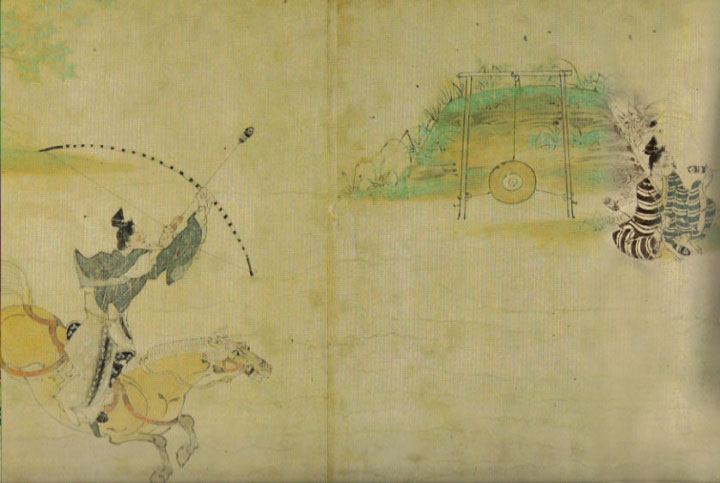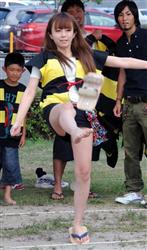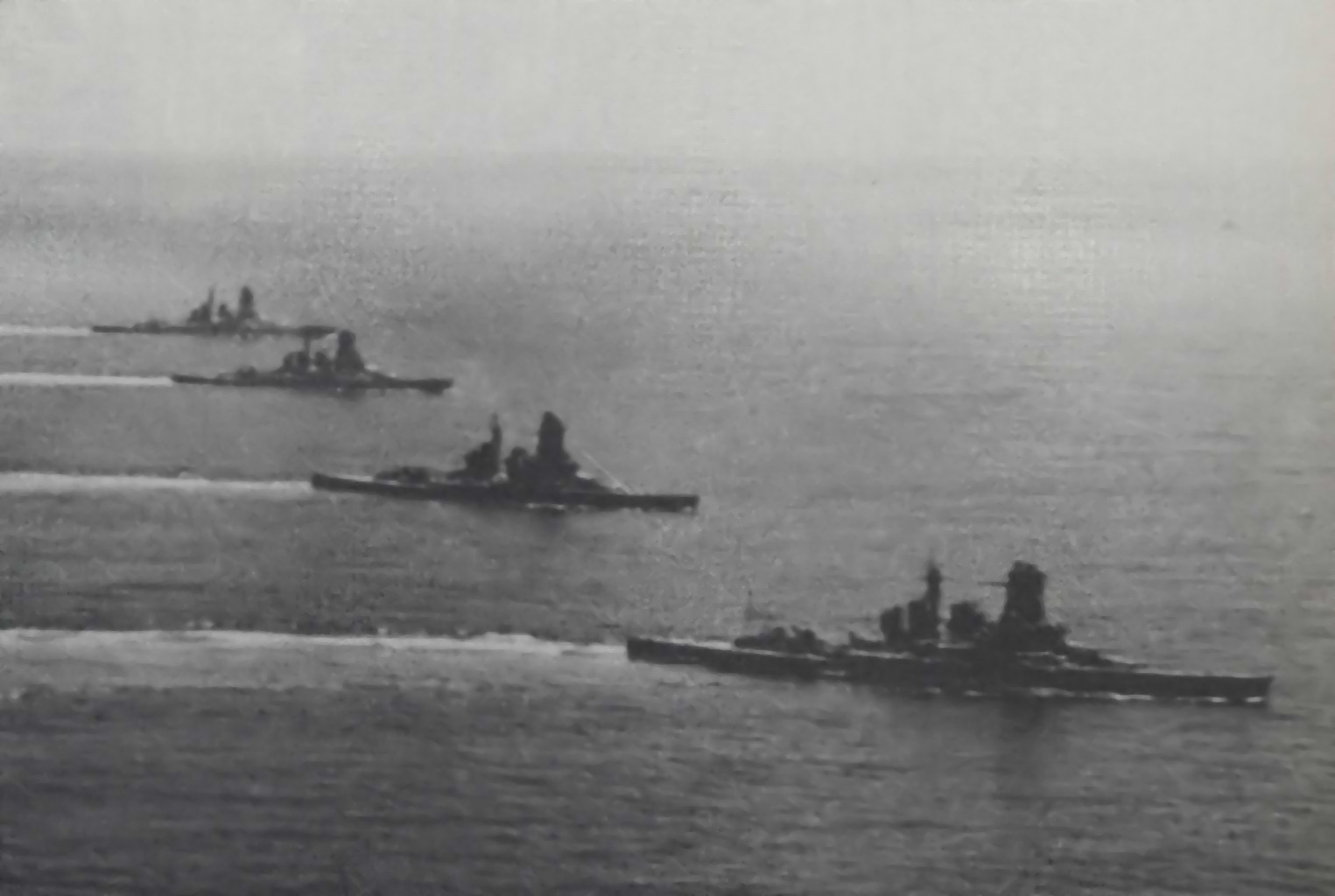Rakurou-gun
Goguryeo (Kokuri)
Baekje (Kudara)
China and Korea had traditional eunuchs (court official) for a long time. I do not know why Japanese court did not adopt eunch. I guess that Mikados did not have absolute power or authority to govern like China and Korea till Edo era. Korean court abolished eunch in 1894. Fu gyoku sho exlied eunchs from the Forbidden Court in 1924.
China, Korea and Japan are bureaucratic nations now. Bureaucrats have governing power in the nations. Korea and Japan impose a writing test to be a bureaucrats. The test originates Chinese old kakyo. Meiji Government adopted it.
As for bronze ware, people in Japan did not use. Lords used them as symbols of authority. People in Japan began to use iron tool from wooden tool in drastic manner. While China had a splendid bronze culture for a long time.
Archery
 |  |
| A pike trooper | Horse archer |
Goryeo(Korai)
Yuan(Gen)
Genkou
 |
Hakimono ni tuite
Saigyo
 |
Kappa ashi
Gomu zouri
I hear that Korean people disliked Japanese thong till the end of the Pacific War. It was a symbol of Japanese governance. We call it geta. A girl throws a geta in a festival in the photo. The geta is Kitarou's tool or weapon in manga of "Gege no kitarou".
Export sword to China
After falling Yuan, Japanese-Ming commerce was official trade, Japan exported a lot of sulfer and steel swords, 3,050 in 1432, 13,000 in 1434, 9,900 in 1451, 30,000 in 1467, 7,000 in 1476, 38,610 in 1486. Chinese officials were surprised at huge export from Japan. The swords might be made in Nara. Naturally sulfer was material of powder. Japan imported a lot of copper coin and books. The commerce brought up merchants. People of Kyoto could not live with out money. Money spread little by little. Japan could export other handcraft Japanese fans, paintings and drawings in Ashikaga era.
Kubota p.144-145
Iron for guns
Primitive arquebus ejecting stone bullet propagated in 15th century. Western type of arquebus having excellent fire mechanism propagated in 16th century. the arquebus were copied at once and made a lot in Kunitomo, Negoro and Sakai. As samurai favored arquebus with their conflicts, iron was short. So western merchants imported steel from India to Japan by their ships[3]. The steel seems to be Wootz steel. So the iron was called Nanban-tetsu meanning Western iron.
Kato Kiyomasa ordered his samurai to arm with a gun each, when Hideyoshi's Korea invasion in 16th century. He invaded Manchuria at first in history of Japan in 1592. That was an age of gun.
Katou Kiyomasa
Edo bakufu allowed to import western books about science, technology, etc in 1720 officially. Western knowledge of anatomy excited some medics. Coming Russians in Hokkaido and knowing Qing defeat by UK sea power, some intellectuals of western hans began to learn western knowledge. The HMS Phaeton incident took a few hans' serious conserns in Kyusyu in 1808. The Phaeton entered Nagasaki without official permission on 15 August 1808. She cheated Japanese coast guards while putting up a flag of Netherlands. Was a hired American pilot on board? Netherlands had hired American merchant ships to trade with Japan and Java in 18th century. It seems to me that the procedure of entering Nagasaki was complicated. Troops of Nabeshima han guarded Nagasaki then. But obsolete guns in Nagasaki showed no power against a British warship. The Phaeton went out on 17 August. A Nagasaki bugyo, a chief official in Nagasaki killed himself for the responsibilty of the incident on the day. He was buried in a tomb of a Buddism temple. But people of Nagasaki honored him who died with unavenged grievances and calmed his soul in Suwa Shrine later.
1700-1799
Phaeton jiken
Nagasaki nyukou tetuzuki
Nagasaki bugyo
Though Nabeshima, Kumamoto, and Satsuma Han wanted powerful guns. But they could not cast guns by traditional tatara iron.
Nabeshima Naomasa decide to build a reverberatory furnace for the iron by themselves only knowledge from books. It spent almost 40 years and a lot of money. Only Nabeshima han suceeded in 1850. Because,
- Nabeshima Naomasa was very eager to learn western technology and science
- Arita-yaki was useful for making bricks enduring high temperature
- Skills of conventional crafts could make wooden machines powered by water wheels
Nabeshima Han made modern breech-loading guns. The artillery skill of Nabeshima crushed Shogun's Densyutai which was an infantry troop trained by French military advisers in the Boshin War.
Syuseikan kanren shisetsu
Nabeshima Naomasa
Guns equipped IJN warships in WWII did not seem short except small 25mm guns, though IJA troubled short of field or anti tank guns. I did not know when powers made gun material with Nickel. Nickel steel of Japan contains 1.5, 3.0 or 5% Ni. Nickel is rare material.[8]
| Year | 1910 | 1913 | 1920 | 1930 | 1938 |
| Japan | 0.16 | 0.25 | 0.84 | 2.3 | 7.0 |
| Britain | 6.5 | 7.7 | 9.2 | 7.4 | 10.5 |
| US | 26.5 | 31.8 | 42.3 | 41.3 | 28.8 |
 |
Koukai kaisen
Chutai-ki
Kongo
Japan Iron & Steel Co. productioned rolled steel at the peak in 1943.[9] The wikipedia showed the production of the company in quarter year. I showed the data by graph. The production decreased in Q1 of 1943 strangely. The volume of the year reached 9 million ton. Wikipedia does not show the data now. I ignore the erased data.
| Year | kton | Normalized in 1938 | Industrial facilities | Ships | Navy | Aircraft [%] |
| 1931 | 1602 | 32.9% | - | - | - | - |
| 1932 | 2010 | 41.2% | - | - | - | - |
| 1933 | 2616 | 53.7% | - | - | - | - |
| 1934 | 3114 | 63.9% | - | - | - | - |
| 1935 | 3745 | 76.8% | - | - | - | - |
| 1936 | 4272 | 87.0% | - | - | - | 6 |
| 1937 | 4680 | 96.0% | 33% | 5% | 10% | 3 |
| 1938 | 4876 | 100.0% | 19% | 6% | 11% | 4 |
| 1939 | 4676 | 95.9% | 18% | 5% | 11% | 4 |
| 1940 | 4532 | 92.9% | 17% | 5% | 13% | 5 |
| 1941 | 4153 | 85.2% | 11% | 7% | 18% | 8 |
| 1942 | 4052 | 83.1% | 11% | 12% | 19% | 8 |
| 1943 | 4149 | 85.1% | 10% | 19% | 19% | 8 |
| 1944 | 2632 | 54.0% | 6% | 38% | 18% | 12 |
| 1945 | 257 | - | 2% | 43% | 15% | 9 |
| Year | kton |
| 1937 | 5,858 |
| 1938 | 4,557 |
| 1939 | 5,098 |
| 1940 | 4,306 |
| 1941 | 4,527 |
| 1942 | 3,806 |
| 1943 | 4,290 |
| 1944 | 3,109 |
| 1945 | 469 |
Kennedy p.257
Technology that make rolled steel for warships developed well just before the Pacific War.[7] Domestic steel and rolled steel productions decreased, as follows.[4] The peak of rolled steel was in 1938. How did Japanese leaders decide to war against US in spite of decreasing steel production? Nippon Steel production increased till 1944. Another site also shows increase of pig iron production.[5] One more antohter data shows that steel production ability increased from 5,210 kton in 1937 to 11,700 kton in 1944.[6] Morimoto showed that Japan productioned steel of 6.85 million ton in 1940.[10 I think that both tables of steel production and rolled steel product and usage of Japan were not true.
Japanese economy had fallen because of expenditure of war in China. Merchant ships are built of 70 % of rolled steel material. Japan should build a lot of merchant ships at first, if Japan wanted to be independent from UK and US merchant ships. Japan made desperate effort to build ships for shortage of freighters sunk by enemy submarines last 2 years. Japan could not transport resources across the Sea of China in safe, though Japan captured and occupied resources in China and Dutch East India. How stupid.
| Year | 1935 | 1945 | 1955 | 1965 | 1970 | 1971 | 1972 |
| Steel | 4,700 | 1,270 | 9,410 | 41,160 | 93,320 | 88,560 | 96,900 |
| China | US | Russia | India | France | UK | Total |
| 489,660 | 108,226 | 72,387 | 53,080 | 19,250 | 14,317 | 785,433 |
Japan exceeded US in 1980, learning mass prodcution of steel from US. The cold war helped Japan develop ironically. China exceeded Japan in 1996. In the nations of socialistic economy, interestingly Russia was exceeded by China in 1991. Now China makes iron 4 folds of Japan.
Mishima, p95
Oushy tekko kyoudou-tai
Syuyoukoku sokou seisan
| Japan | Korea | Germany | Ukraine | Brazil | Italy | Turkey | Taiwan | Spain | Mexico | Canada | Total |
| 120,203 | 51,517 | 48,550 | 42,830 | 33,782 | 31,547 | 25,754 | 20,908 | 18,999 | 17,563 | 15,512 | 427,165 |
| ||||||||||||||||||
|
| Nation | trillion $ | trillion yen | Share[%] |
| USA | 18.52 | 2130 | 31.7 |
| Japan | 4.70 | 540 | 8.0 |
| UK | 3.99 | 458 | 6.8 |
| China | 3.37 | 387 | 5.8 |
| France | 2.85 | 327 | 4.9 |
| HongKong | 2.58 | 297 | 4.4 |
| Total | 61.6 |
Morimoto, p378-382
Money may be the power of nations now. US is the super power of money with nuke. The table shows aggregate market value at end of Sep 2007.
[1] Kubota, p62-63
[2] Kubota, p121
[3] Kubota, p160
[4] Hinkoku, p100, p102
[5] Sangyou
[6] Tekkou Seisan Setsubi no vintage Henka
[7] Soukou kouhan no kikai-teki seishitsu
[8] Mishima, p121
[9] Japan Iron &; Steel Co.
[10] Morimoto, Hinkoku kyouhei, p25

aboutMe
© 2007-2011 Enoki Sensor All Rights Reserved